This post is a simple guide to navigating the world of safe non-toxic bakeware and healthy baking sheets and pans, aiming to ensure your kitchen is as safe as the meals you prepare.
Let’s have a look into the best and the safest bakeware options available, highlighting the importance of switching to non-toxic baking sheets and pans. It’s not just about what we eat but also about where and how we cook our food, so choosing the healthiest cookware with safest materials should also be a priority.
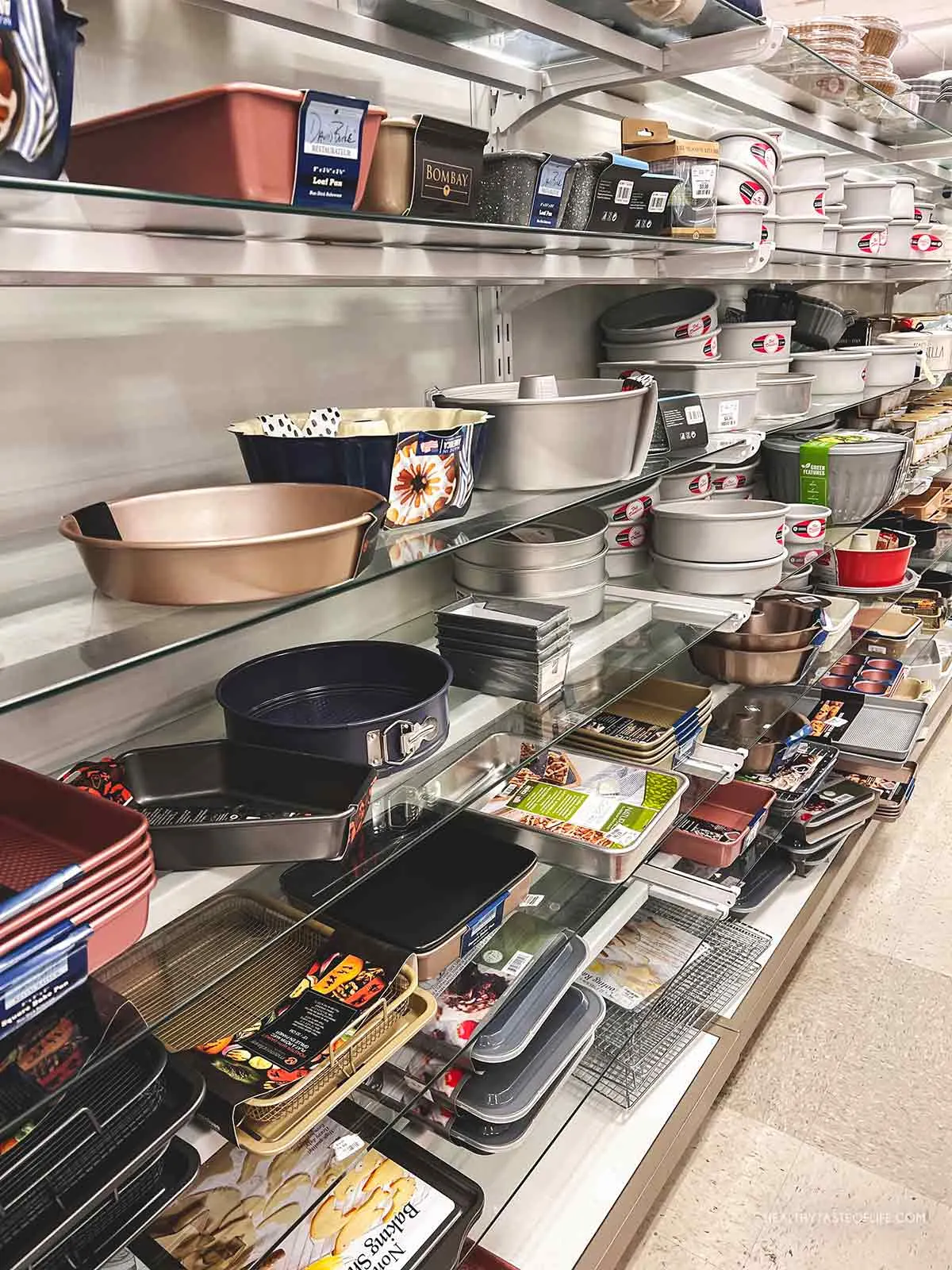
We’ll be listing healthy baking pans and sheets, by their type and by purpose, emphisizing the best non-toxic material for each according to their attributes, as well as reputable companies, and top picks available online. Let’s ensure every meal is a step towards better health and peace of mind!
Safe Non-toxic Baking Sheets and Pans: What to Look For?
When it comes to choosing safe and non-toxic baking sheets and pans, the material of the bakeware is crucial. Here’s a list of some of the healthiest, least toxic materials for bakeware:
1. Stainless Steel:
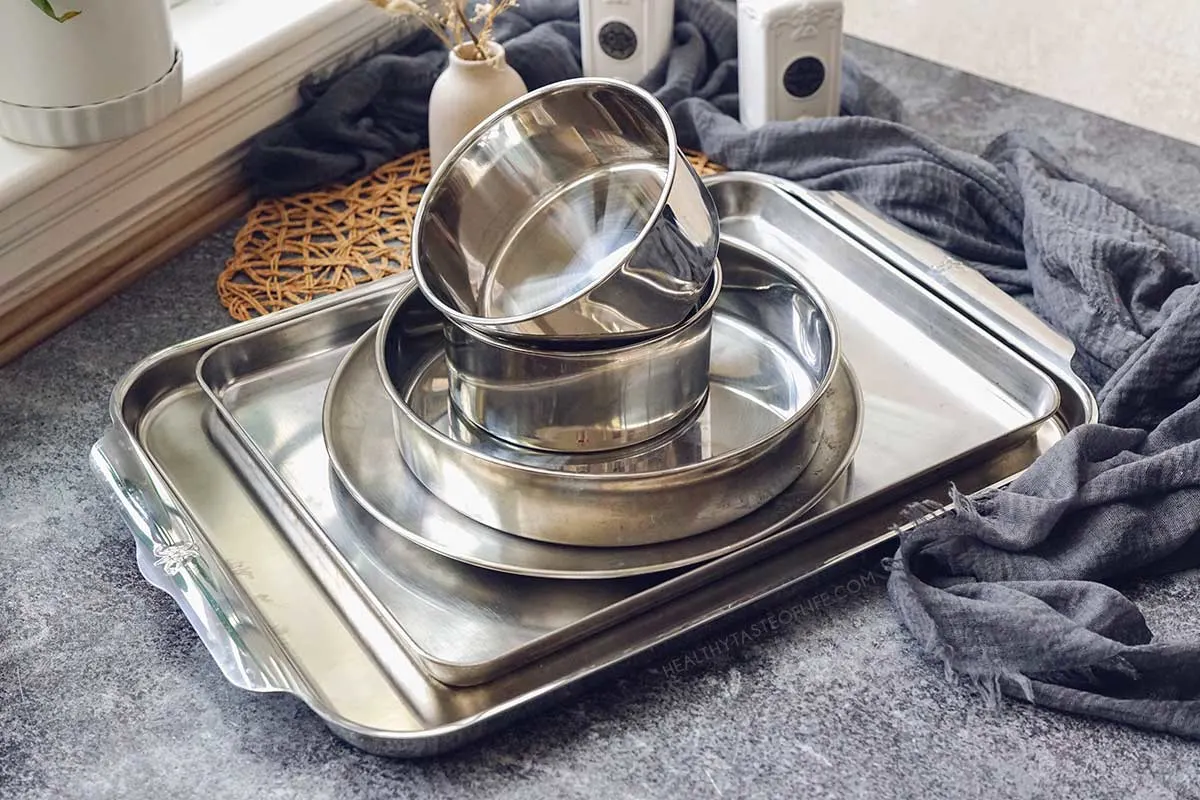
- Healthiest Material: Unlike other metals, stainless steel does not react with acidic or alkaline foods, which means it won’t leach harmful substances into your food during cooking or baking.
- Attributes: Durable, non-reactive, high heat tolerant and resists rust and corrosion. It’s easy to clean and maintain.
- Best For: Stainless steel bakeware is ideally suited for baking cookies, pastries, and sheet cakes, where even baking, durability, and resistance are crucial, ensuring consistent results and golden-brown finishes.
2. Ceramic:
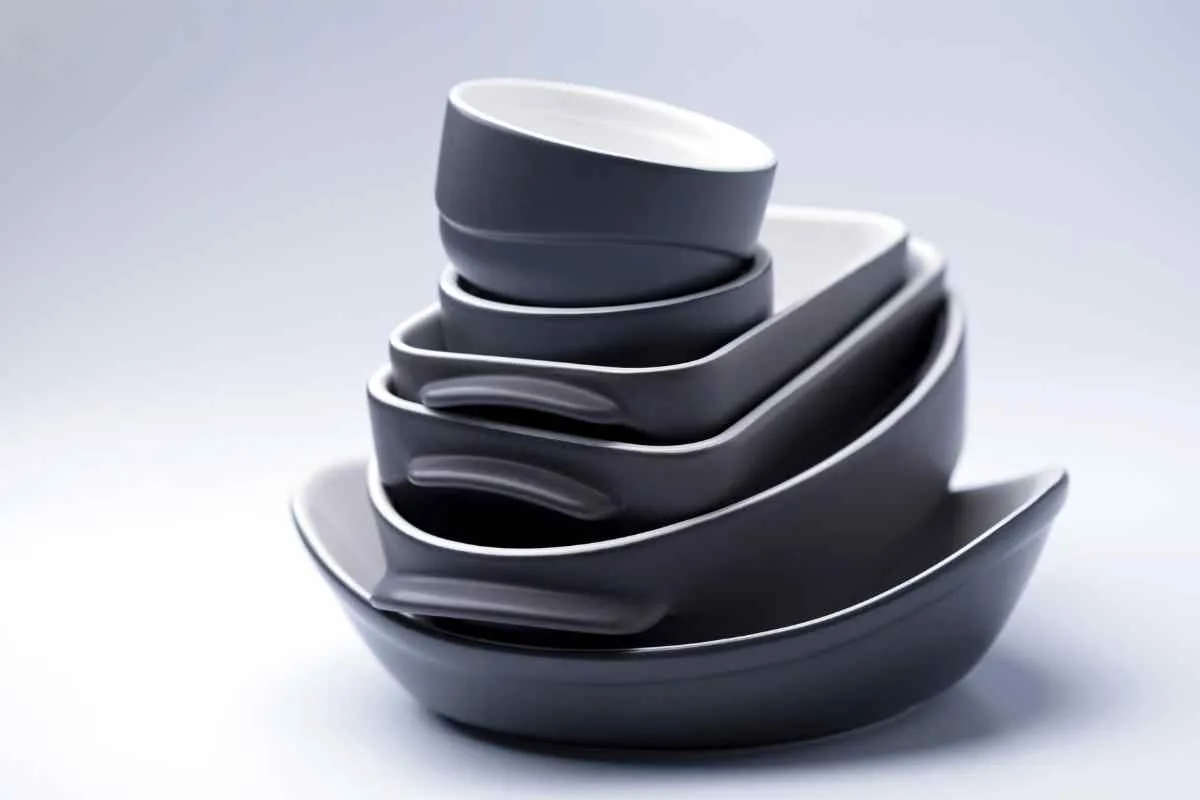
Related: How Safe Are The Beauty Products We Use Daily
- Safest Material: Known for its inert nature and does not emit toxic fumes. Offers a safe non-stick surface, reducing the need for excessive oils or fats. Usually free from PFOA, PFAS, lead, and cadmium, ensuring a safe cooking environment.
- Attributes: Offers even heating and maintains temperature, ideal for long, slow cooking. Can withstand high temperatures (if pure ceramic) without breaking down or releasing toxins.
- Best For: Ceramic and ceramic-coated bakeware are optimal for dishes requiring steady, even heat and a non-reactive surface, such as casseroles, pies, tarts, and roasted dishes, ensuring uniform baking and maintaining the purity of flavors in acidic and alkaline foods.
Related: Best Diet & Foods For Healing At Cellular Level (+PDF List)
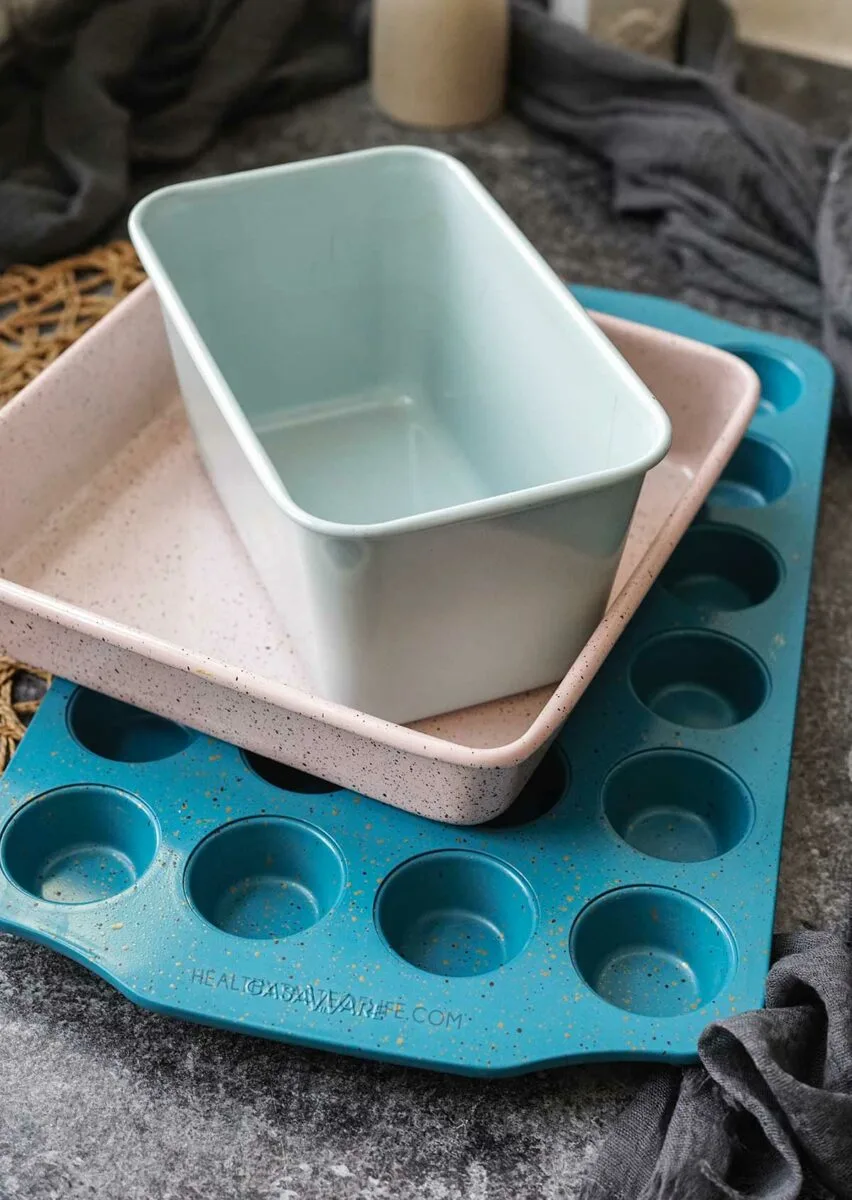
Differences Between Ceramic and Ceramic Coated Bakeware
Both ceramic and ceramic-coated bakeware offer non-toxic, safe, and eco friendly options for baking, with differences in composition, weight, and long-term durability.
- Composition: Ceramic bakeware is made entirely of ceramic, while ceramic-coated bakeware is typically metal bakeware with a ceramic non-stick coating. Also ceramic is generally heavier than ceramic-coated bakeware.
- Durability: While both are durable, ceramic-coated bakeware may lose its non-stick properties over time, especially if the coating is damaged.
3. Cast Iron:
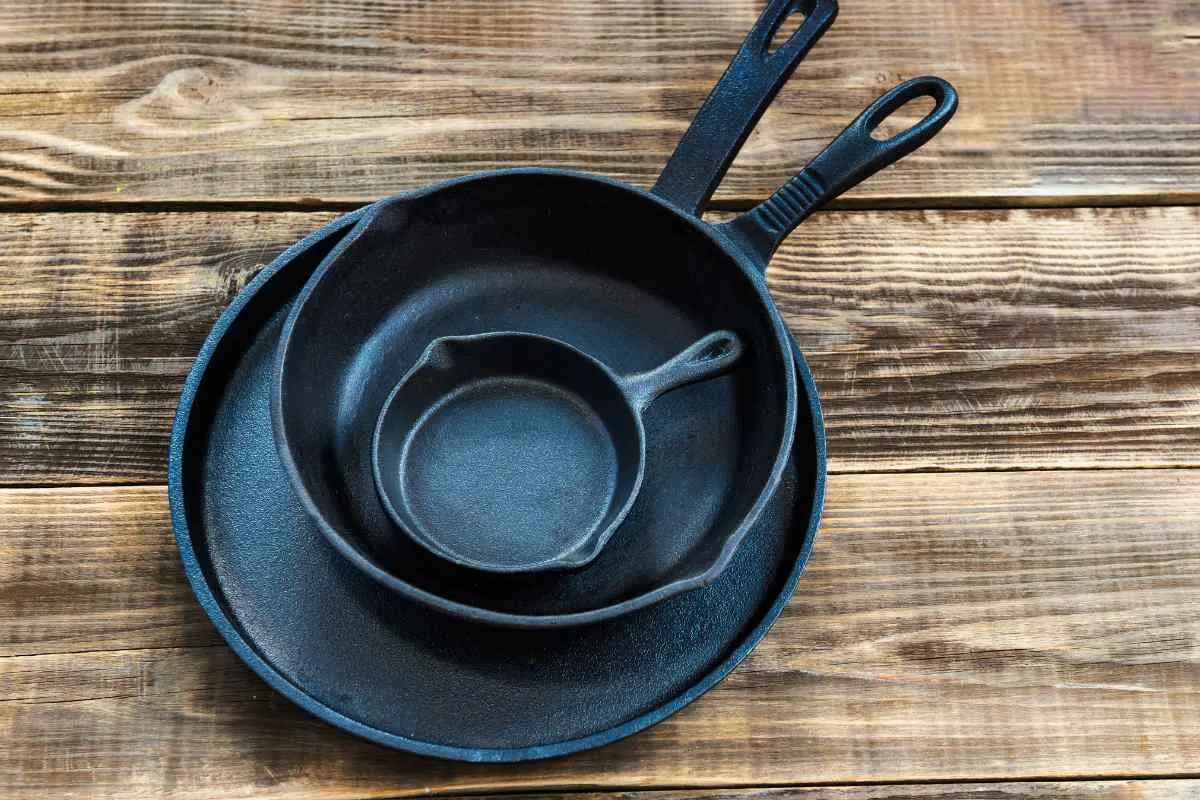
Related: The Secret of Good Digestion – Food Combining Chart
- Benefits: offers a non-reactive and safe cooking surface, ensuring no leaching of harmful substances into food. A well-seasoned cast iron provides a natural non-stick surface, reducing the need for harmful chemical coatings.
- Attributes: cast iron’s inherent non-reactive nature, high heat resilience, even cooking and enduring durability make it a secure and non-toxic choice for bakeware.
- Best For: Cast iron bakeware is best suited for baking goods that benefit from even heating and high heat retention, such as breads, biscuits, cornbread, skillet cookies, brownies, cakes, deep-dish pizzas, Dutch baby pancakes, fruit cobblers, crumbles, frittatas, quiches, and roasted meats or vegetables, delivering a perfect balance of crispy, caramelized exteriors and moist, tender interiors.
4. Glass:

- Chemical-Free: It does not release any harmful substances or odors, regardless of the temperature or the acidity of the ingredients.
- Attributes: It also offers excellent heat distribution, oven-safe, ensuring even baking, and is environmentally friendly, being 100% recyclable.
- Best for: Glass bakeware is best for baking casseroles, lasagnas, and other layered dishes, roasting vegetables and meats, and preparing desserts like bread puddings and fruit crisps,
5. Silicone:
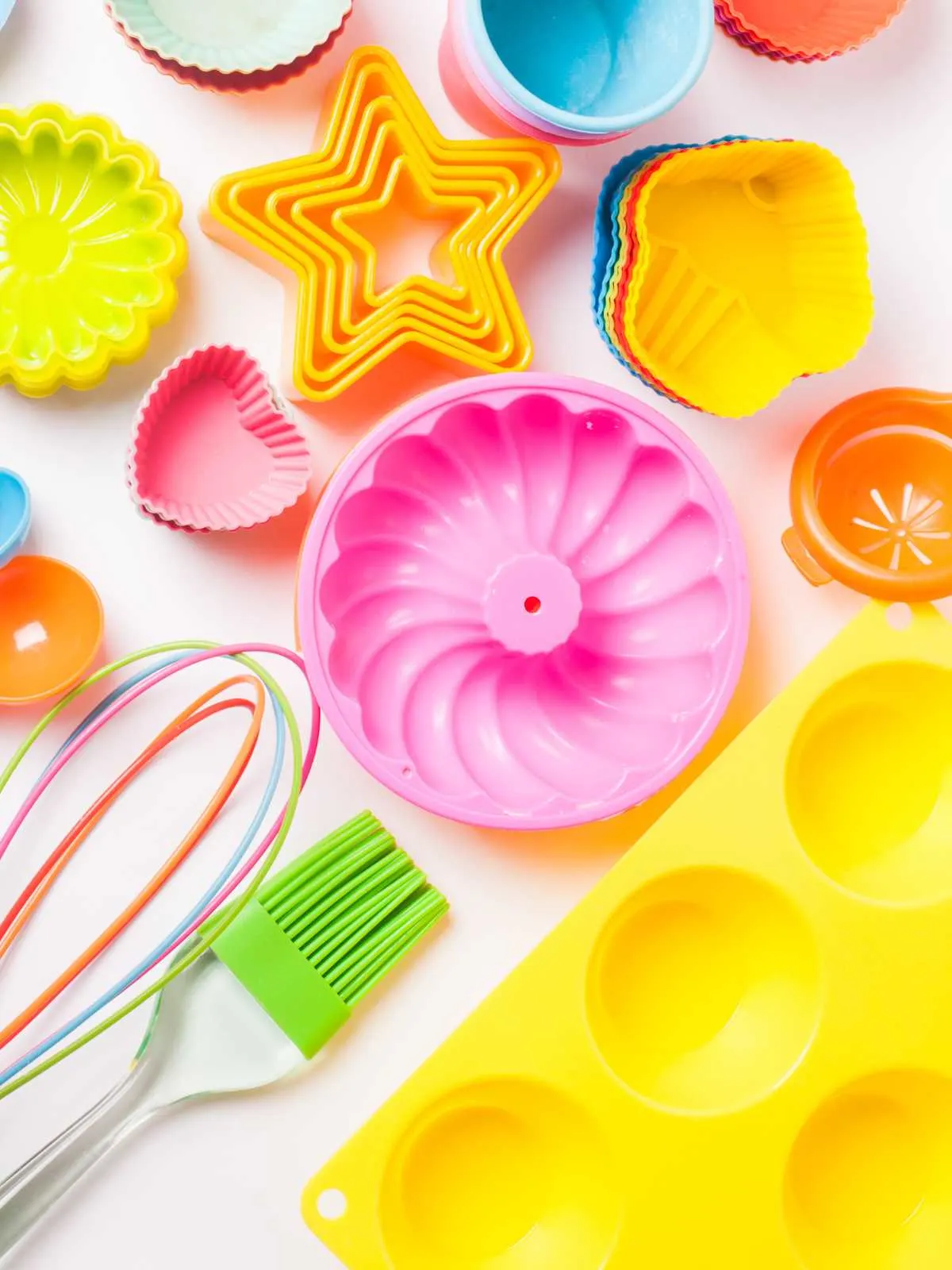
- Least Reactive: Does not react with food or beverages.
- Attributes: Flexible, non-stick, and can withstand oven temperatures.
- Potential concerns: with silicone bakeware center around the possibilities of leaching chemicals at high temperatures and the integrity of the material degrading over time, potentially impacting food safety and quality. Some may contain fillers or additives.
- Best for: consider using silicone bakeware for suitable foods, avoiding highly acidic or fatty foods, especially when baking at high temperatures.
Related: How To Choose Clean Supplements: Quality Check Tips
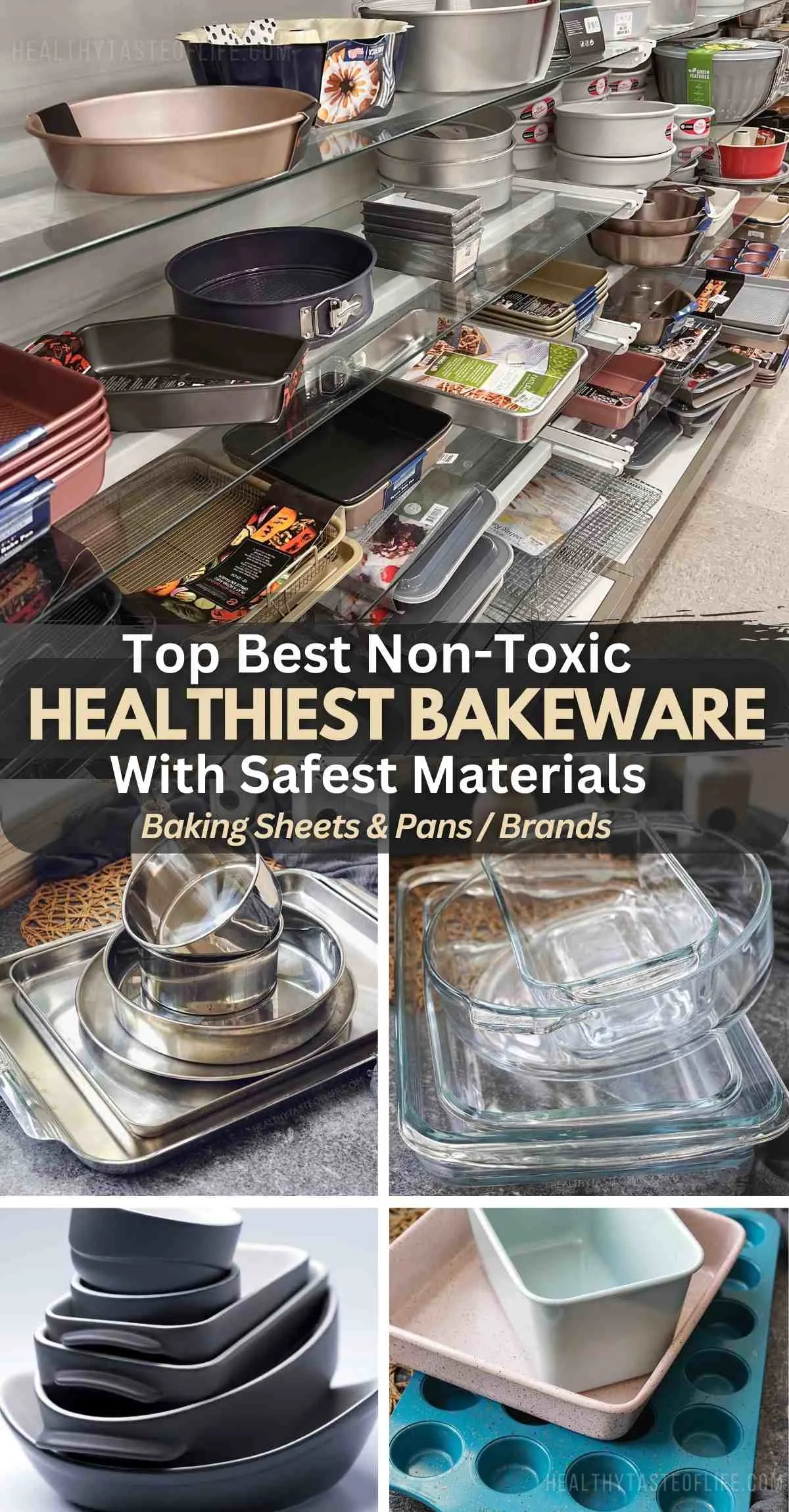
Heads up: some links are affiliated & I may receive a small commission from qualifying sales. For more info see my disclaimer policy.
Best Non-Toxic Bakeware By Type and Purpose
Baking pans come in a plethora of shapes and sizes, each serving a unique purpose in the baking process. Let’s delve into various baking pan types and discern the safest, healthiest, eco-friendly, and practical material for each:
1. Sheet Pans:
- Best Material: Stainless Steel (there are basic stainless steel baking sheets, which tend to warp and there are also thicker, superior and warp-resistant tri-ply clad stainless steel baking pans that can last a lifetime).
- Why: Durable, rust-resistant, does not leach harmful substances.
2. Muffin Pans:
- Best Material: Ceramic coated or silicone such as this ceramic-coated muffin pan (hand washing is recommended) and this silicone muffin pan (freezer safe, oven-safe, microwave safe and dishwasher safe);
- Why: Heat tolerant to 450 degrees Fahrenheit, non-reactive, safe and easy to clean, while silicone pans are heat resistant up to 428°F / 220°C also provides flexibility and easy release.
3. Loaf Pans:
- Best Materials: Glass such as these tempered glass loaf pans, ceramic coated such as this ceramic coated non-stick loaf pan, or 100% pure ceramic (like this natural pure ceramic loaf pan) and natural clay (such as this stoneware loaf pan).
- Why: These materials do not react with acidic ingredients like tomatoes or lemon, ensuring no harmful substances mix with the food. Evenly distributes heat and draws moisture away from the surface. Virtually nonporous, so it doesn’t retain oils, odors or flavors.
4. Round Cake Pans:
- Best Material: Stainless Steel (such as these simple stainless steel cake pans) or thick warp-free surgical grade stainless steel cake pan – it’s 5-Ply cooking surface gives a healthy alternative to coated nonstick or aluminum. Also the ceramic coated cake pan can be used as a healthier bakeware alternative.
- Why: Stainless steel is a safe, has a non-porous surface that transfers no harmful chemicals into your food, but it’s not a great conductor of heat. Aluminum conducts heat very well, but it can leach harmful metal into your food. Alone they have their own pros and cons, but put them together and it’s a perfect combination. Therefore aluminum core and stainless steel layers can be found in more expensive bakeware, usually they are advertised as 3-ply or 5-ply stainless steel. They have lifetime waranty.
5. Springform Pans:
- Best Material: Carbon steel with a safe non-stick coating or glass base. Also cermic coated springform designed for higher temperatures.
- Why: Carbon Steel provides even heating, and glass is non-reactive. Ceramic coatings do not release toxic fumes when heated at high temperatures, making them a safer and more preferable option.
6. Pie Pans:
- Best Material: Glass (such as this standard glass pie dishes) or ceramic such as this 100% pure ceramic pie dish.
- Why: Offer even heating and are non-reactive to acidic ingredients like fruit fillings. They are non-toxic, don’t absorb odors, stains or flavors into your food. Pretty, practical and durable for everyday use.
7. Square Baking Pans:
- Best Material: Stoneware, Ceramic and non-stick ceramic coated square baking pans.
- Why: Excellent heat retention and distribution, and are non-reactive. The ceramic coated ones are less heavy and easier to handle, but their ceramic coating will degrade over time.
8. Bundt Pans:
- Best Material: Carbon steel, ceramic-coated bundt cake (known for easy release) and Borosilicate Glass are all good options.
- Why: It resists warping, popping, and bending, even in high temperatures of up to 482°F and up to 959°F for borosilicate glass. The material is rust and scratch-resistant and is designed to last a long lifetime. The ceramic coating is less resistant when compared to other two.
9. Roasting Pans:
- Best Material: Glass, Stainless Steel, Ceramic Coated Roasting Pan, Pure Ceramic Pan or Enamel-Coated Cast Iron.
- Why: Stainless steel is durable and rust-resistant especialy if its thick with multiple layers, the enamel-coated cast iron is excellent for heat retention and even heat distribution, the ceramic coated has a carbon steel core, the pan is much lighter than other options and very easy to clean. As for glass or pure cermic pans, they are non-reactive providing even heat distribution, also since they are both coating free they can last longer.
10. Pizza Stones/Pans:
- Best Material: Cordierite or Ceramic.
- Why: The ceramic pizza stone is safe to use on gas, can be used in all types of ovens and also used under the broiler, can withstand high oven temperatures up 900 degrees F and distribute heat evenly, plus it’s scratch resistant. As for cordierite pizza stone, it’s formulated from toughened porous cordierite stone and is resistant up to 1112°F (600℃), the drawback being the porous material absorbs oils over time.
Sustainability and Eco-friendly Aspect
- Glass, Ceramic, and Stainless Steel are often considered more eco-friendly due to their durability and long life, reducing the need for frequent replacements.
- Silicone is durable and has a long lifespan, but its eco-friendly status is debated due to difficulties in recycling it.
- Cast Iron and Carbon Steel are durable and long-lasting if properly maintained, making them eco-friendly choices.
Considerations for Choosing Materials
- Health and Safety: Opt for materials that are non-reactive and do not leach harmful substances into food, like glass, ceramic, and stainless steel.
- Durability and Maintenance: Choose materials that are durable and do not require excessive maintenance, like stainless steel and glass.
- Eco-Friendly: Consider the environmental impact of the material, its durability, and recyclability.
Best Non-Toxic Baking Sheets and Pans on Amazon:
- CasaWare Ultimate Commercial Weight Cookie Sheets (Carbon steel core with ceramic coating);
- Hestan Provisions OvenBond Sheet (warp-resistant 3-ply clad stainless steel with aluminum core);
- Pyrex Easy Grab Glass Baking Pan (Clear glass);
- Le Creuset Cast Iron Signature Roaster (Cast iron with enamel coating);
- GreenPan Premiere Ovenware Warp-Free Baking Sheet (Cast aluminum with ceramic coating);
- Best budget friendly Stainless Steel Baking Sheet (18/0 stainless steel without any coating);
FAQs on Non-Toxic Bakeware, Baking Sheets and Pans
Generally, modern non-stick coatings like ceramic are considered safe. However, it is crucial to avoid PFOA and PTFE coatings, as they can release toxic fumes when overheated.
Though widely used, there are concerns about aluminum leaching into food, especially acidic food. Opt for anodized aluminum, which is sealed and non-reactive, or look for alternatives.
Follow the manufacturer’s care instructions, avoid overheating, use wooden or silicone utensils to prevent scratches (especially with ceramic coatings), and hand wash to prolong life.
While silicone is naturally non-stick, greasing can sometimes aid in easier release of the baked goods.
Porcelain enamel-coated steel is generally considered a safe and non-toxic bakeware option, providing a non-reactive surface due to the fusion of natural clay to steel. This prevents leaching of metals into foods and resists corrosion. However, caution is needed to avoid chipping the enamel, which could expose the steel underneath, potentially leading to rusting or reactions with foods.
Caraway bakeware, while acclaimed for its design and ceramic non-stick coating, may harbor health concerns due to its aluminum core, which, if the ceramic coating is compromised, can pose risks of metal leaching into food.
USA Pan Bakeware, despite its popularity and quality build, may not be the healthiest bakeware as it utilizes aluminized steel, a material potentially prone to aluminum leaching and coating deterioration, which could pose health risks over time.
©HealthyTasteOfLife. Content and photographs are copyright protected and need prior permission to use. Copying and/or pasting full recipes to other websites and any social media is strictly prohibited. Sharing and using the link of this recipe is both encouraged and appreciated!





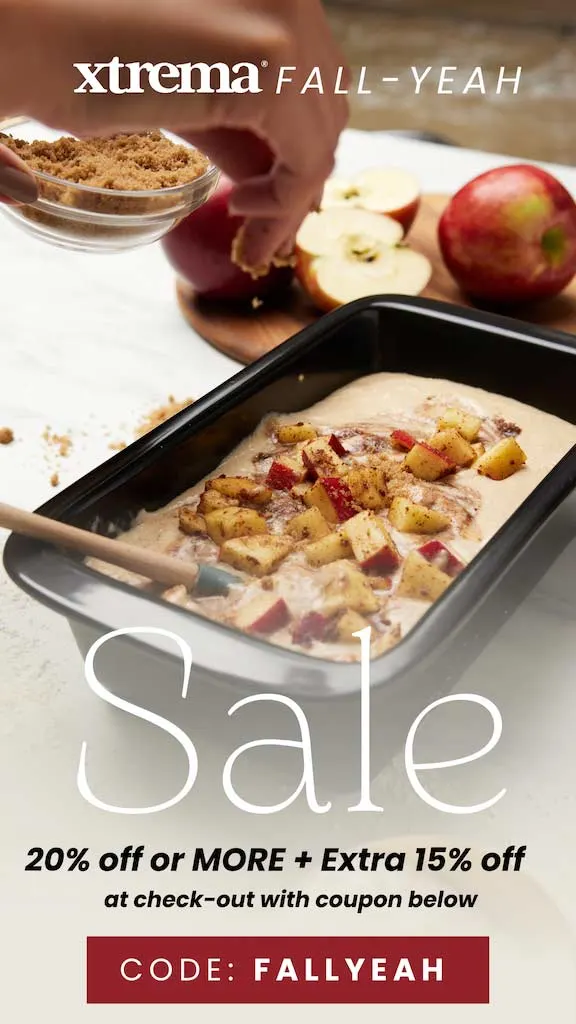

















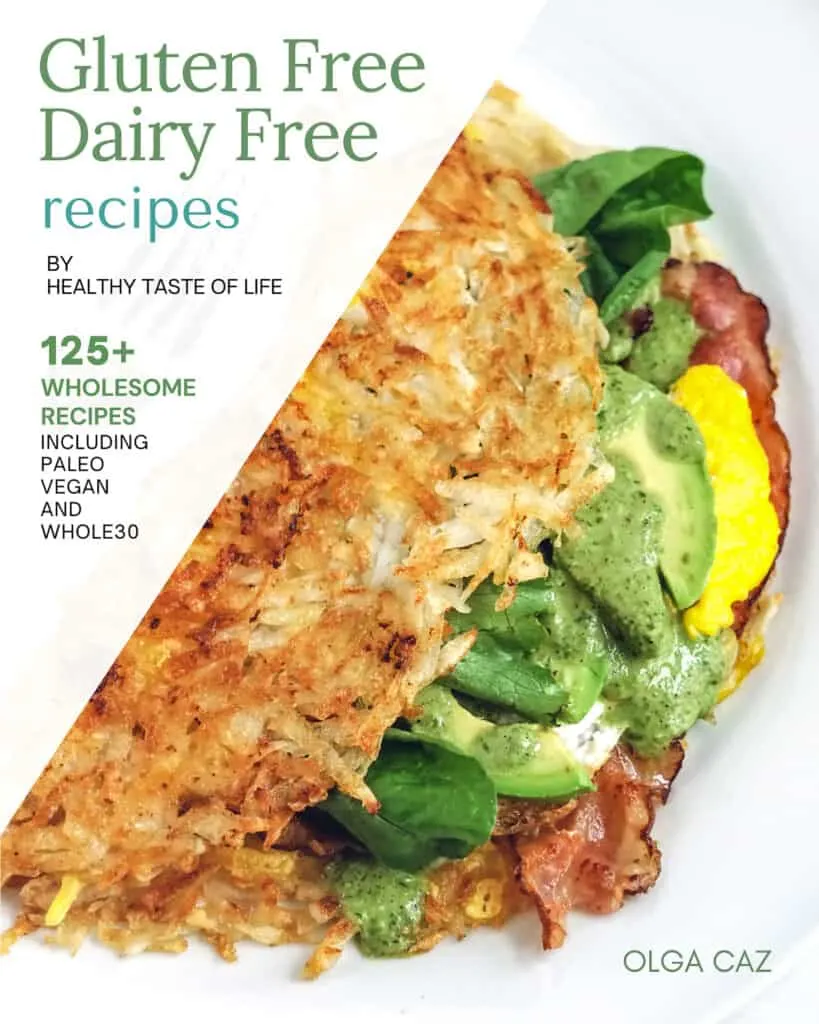
Kyle Schmidt
Wednesday 3rd of April 2024
Hello my loved one! I want to say that this post is amazing, great written and include almost all significant infos. I would like to look extra posts like this.